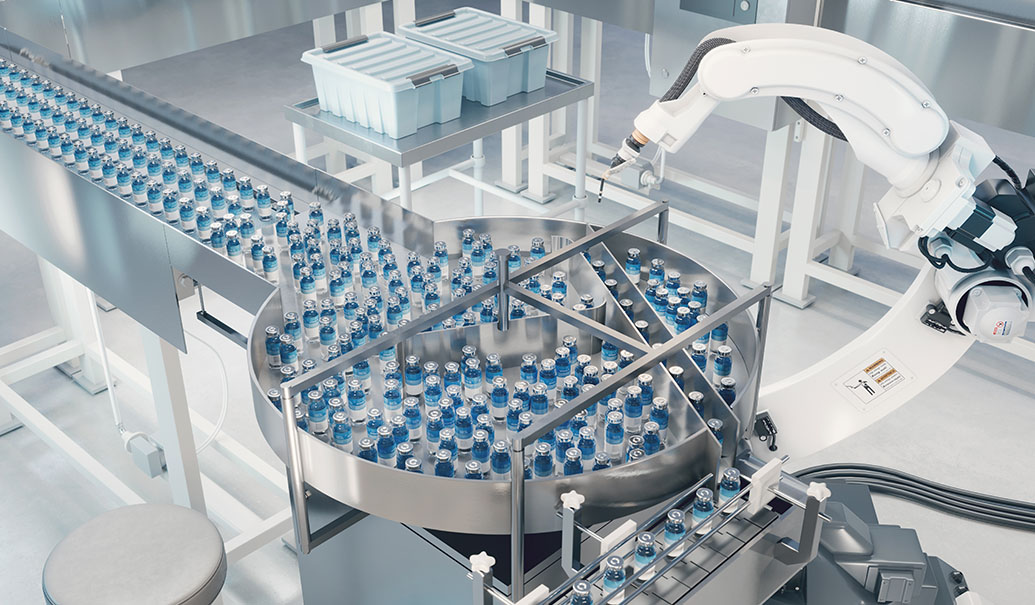By the time a patient reaches the point of being treated with a cell and gene therapy (C>), they have often tried myriad other, more traditional treatments. They’re likely very sick, and time is of the essence. It’s not hyperbole to say this is a patient’s last hope for getting better. C> treatments have the potential to cure previously uncurable diseases, but unique manufacturing and supply chain challenges make it more difficult to deliver a C> than a traditional therapy. Between the precariousness of the patient’s health and the high cost of manufacturing a C> treatment, seeing a treatment go to waste because of a supply chain challenge is gut wrenching.
While supply chains play an important role in ensuring patients have access to traditional therapies, they’re absolutely critical for patients receiving C>s, as most of these treatments must be stored at ultra-low or cryogenic temperatures and shipped on specific schedules. Common supply chain problems—a truck breaking down, a canceled flight, a brief outage at a manufacturing facility—can be devastating for the people waiting for C>s. So that precious treatment center appointments and doses aren’t wasted, delays stemming from anywhere in the C> supply chain need to be communicated in real time.
Preventing supply chain delays is particularly relevant for autologous C>s, with their development involving extracting cells from patients, transporting the cells to the manufacturing facility and then back to the patient for infusion. While the exact steps and systems may differ between therapies, orchestrating treatment will always involve many systems (see Figure 1).
Figure 1: Steps and systems needed to deliver autologous C>s
How can C> supply chain teams solve these challenges? One answer is to use an end-to-end analytics program across the entire cell therapy journey. The ability to perform end-to-end analytics can help pharma companies monitor the performance of the supply chain, predict issues, mitigate risks and avoid problems so that the maximum number of patients can take advantage of C> treatments.
As the use case examples in Figure 2 show, C> supply chains can create a performance analytics program by linking data across multiple systems.
Figure 2: C> analytical use cases and the systems containing data needed to perform them
The benefits of an end-to-end C> supply chain analytics program
Given the emphasis on speed, quality and the large number of links in the C> ecosystem, pharma companies should consider building or cultivating an end-to-end analytics program for better decision-making. Bringing together data from manufacturing facilities, treatment centers, suppliers, logistics teams and others offers tangible benefits, including:
Real-time monitoring: Companies can use analytics to follow a patient from treatment enrollment through post-treatment monitoring. Real-time monitoring makes it easier to verify insurance benefits, schedule treatment, address shipping issues as soon as they become evident and pursue long-term monitoring and follow up. It’s one of the more complicated use cases, because it requires data from all systems to be linked together.
Predictive modeling: Pharma companies can analyze data collected through end-to-end monitoring for improved planning and decision-making. For example, if a certain insurance plan always requests the same additional information, teams can build that into the workflow. If an airport struggles with international shipments on the same day each week, they can use that information to explore alternative options to avoid shipping delays. If there seems to be issues at a treatment center or hospital at particular times, analytics can make the problems visible so that pharma companies can develop solutions.
An end-to-end analytics program also enables manufacturers and other stakeholders to predict when patients could drop off and take action before they do. They could, for instance, see data around when patients commonly express anxiety or fail to book travel. With these insights in hand, manufacturers can work with stakeholders to address patient concerns before they negatively affect the patient’s journey and cause an unused treatment slot.
Scheduling optimization: If a patient does drop off, it becomes imperative to ensure someone else can use their treatment slot. An end-to-end analytics program makes it easier to see where last-minute cancelations are most likely to happen and quickly determine the best options for filling unexpected openings. And if a manufacturing issue arises, analytics can help pharma companies adjust treatment schedules so that the effect on patients is minimized.
Treatment centers can use performance analytics to determine the precise amount of overbooking that benefits both patients and stakeholders. Figure 3 highlights the effects of overbooking too much and too little.
Figure 3: The downsides of overbooking too much and not enough
An interconnected database: The foundation of an end-to-end analytics program
Supply chain teams have two options for constructing an interconnected database, which is the foundation of an end-to-end analytics program. The first option is building an interconnected database from scratch. Emerging pharma companies that don’t have systems already in place are most likely to pursue this strategy. While developing an interconnected database from scratch is challenging, it also presents an opportunity. Pharma companies can implement an interconnected database and establish an optimized end-to-end analytics program they can use from the start.
The second option for building an interconnected database is using the data fabric concept that leverages the systems a company already has in place—manufacturing, commercial, supply chain, among others. The data fabric concept involves sending data from existing systems to a virtualization layer—the fabric—at regular intervals. Data across systems are then merged at the virtualization layer.
This option may be more feasible for existing pharma companies, as they likely already have multiple systems in place. By using the fabric as an integrated layer of data and processes, a data fabric enables organizations to seamlessly control access, while sharing and merging data from multiple sources, systems and platforms. It also provides a unified approach to data management, allowing manufacturers to employ a control tower and make better use of all their data assets, while aiding in better data visualization, accessibility, governance and harmonization.
Choosing the right analytics use cases
Once you have an interconnected database in place, selecting and prioritizing the right analytical use cases is next. It’s important for the use cases to be relevant for the specific C>, and these steps can help you choose the right cases:
- Collect end-to-end and cross-functional input on current pain points.
- Create a framework to rank the pain points. This framework should note the impact of not solving the problem and the difficulty in building the analytics to solve the problem.
- Apply the framework, prioritize use cases, create a build plan and execute the build plan.
For the first use cases, it will be important to choose those that are easier to implement, so that the benefits of the analytics program can be shown quickly.
The benefits of using an interconnected database for end-to-end analytics
An end-to-end analytics program powered by an interconnected database offers three big benefits for cell and gene supply chain teams:
Improved data access: It’s more viable for organizations to access data from multiple sources and systems, such as enrollment, case management, couriers and more.
Enhanced decision-making: Organizations can gain a comprehensive view into their data, enabling them to make better decisions on topics like inventory spending and dynamic slot allocation.
Better compliance: It’s easier to meet regulatory standards when you have improved visibility into your operations.
How to get started with end-to-end analytics
There are two essential factors for starting to build an end-to-end analytics program. First, collaboration and cross-functional buy-in is needed. With the data and analytics use cases cutting across functions, finding a champion with ties to multiple functions is critical. This is why we say a classic pharma operating model can sometimes impede C> decision-making.
Second, as we mentioned, start with one or two simpler use cases—and don’t let perfection slow you down. Building the entire fabric can be time intensive, but it can be done in stages, starting with the highest priority use cases. To minimize re-work in the data fabric, do heavier design work upfront to ensure its scalability and the ability to easily add new data sources later.
At both a company and industry level, working together is vital. Cell and gene therapies will never reach their full potential without collaboration from key players across the ecosystem. As Novartis’ Tay Salimullah recently said at a C> panel hosted by Novartis and the London School of Economics: “We are dealing with 21st century medicines within healthcare systems that were designed for chronic therapies, requiring a whole new level of co-creation, convergence and cooperation.”
For individual companies, an end-to-end analytics program can make that collaboration easier and more visible. To scale up the cell and gene industry, we must invest now in the interconnected systems that make an end-to-end analytics program possible. It won’t be simple—nothing related to C> is—but it will be worth it to deliver safe and effective therapies to more patients.
Add insights to your inbox
We’ll send you content you’ll want to read – and put to use.















